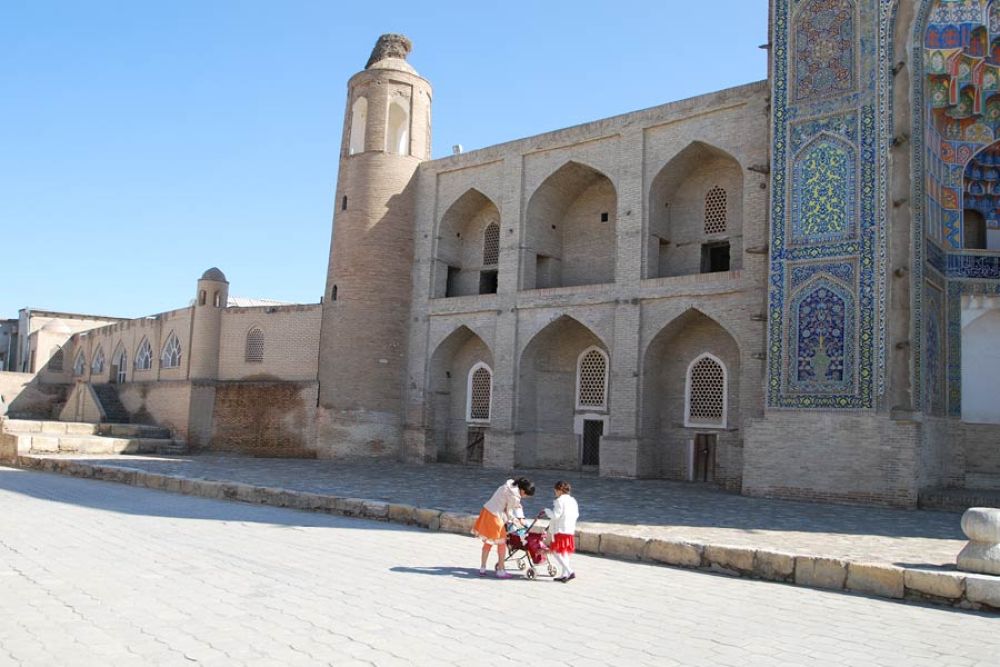

The Abdulaziz Khan Madrasah is a quintessential example of the Islamic architecture that proliferates in Bukhara, Uzbekistan. This madrasah, built in the 17th century, is named after Abdulaziz Khan, who governed the Bukhara Khanate from 1645 to 1680. As a center of religious learning, the madrasah has played a significant role in the scholarly and cultural history of the region.
Historically, Bukhara has been a crucial hub on the Silk Road, attracting merchants, scholars, and travelers from across Asia and Europe. This position helped establish the city as a focal point for cultural exchange and intellectual development. The Abdulaziz Khan Madrasah, with its intricate mosaic façade and classical layout, embodies this rich history and has been a point of interest for visitors for centuries.
The structure's ornate decoration, with blue tiles and calligraphic inscriptions, is particularly noteworthy and contributes to its status as a tourist attraction. Inside its walls, visitors can marvel at the intricate tilework, lofty domes, and the classic iwans (arched entrances) that define traditional madrasah architecture.
Tourism in Bukhara, and specifically to sites like the Abdulaziz Khan Madrasah, began to take shape as part of the broader trend of historical and cultural tourism in Uzbekistan. Since the country's independence in 1991, efforts have been made to preserve the architectural heritage and promote it as a tourist attraction, leading to a steady increase in international visitors.
The inclusion of Bukhara on the UNESCO World Heritage list in 1993 marked a significant milestone in the development of tourism, as it drew global attention to the city's historical monuments, including the Abdulaziz Khan Madrasah.
Recent trends in tourism to the Abdulaziz Khan Madrasah and Bukhara reflect a growing interest in unique cultural experiences and educational travel. Ecotourism and sustainable travel practices are also beginning to influence how people visit the region, with an emphasis on preserving the historic site for future generations.
Moreover, the Uzbekistan government has facilitated easier access for tourists, including visa relaxations and improved infrastructure, which has further aided in the growth of tourism in the area. In the pre-pandemic period, tourist arrivals showed a significant increase and the trend is expected to continue as travel normalizes.
The impact of digital media cannot be overstated, as social media platforms and travel blogs continue to highlight the beauty of the Abdulaziz Khan Madrasah, contributing to a ripple effect of increased international interest and visitation.
The Abdulaziz Khan Madrasah continues to captivate visitors with its historical grandeur and architectural magnificence. Its place in the tourism industry of Uzbekistan remains solid as both the government and international bodies like UNESCO work to preserve this timeless site. Travelers seeking a blend of history and beauty will find the Madrasah, and Bukhara as a whole, a destination that fulfills the promise of an unforgettable journey into the heart of Central Asia's storied past.